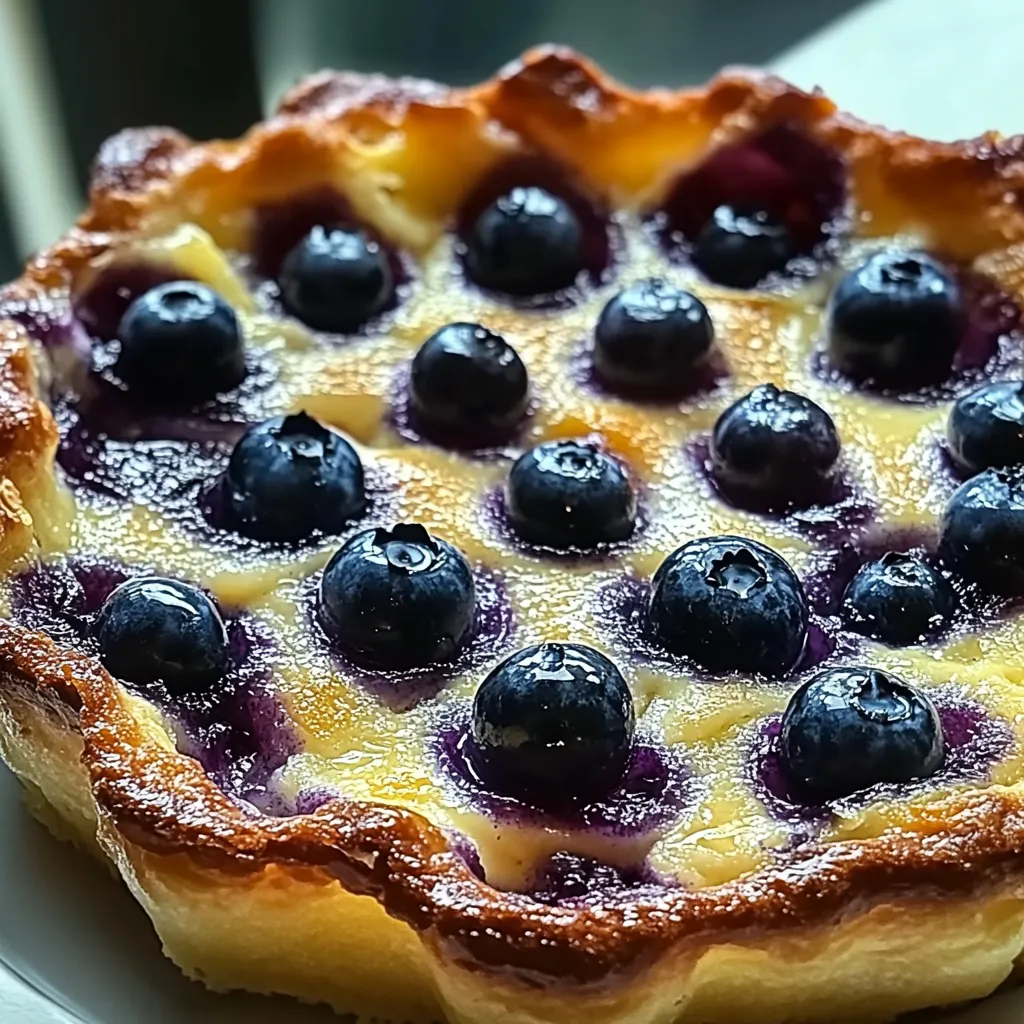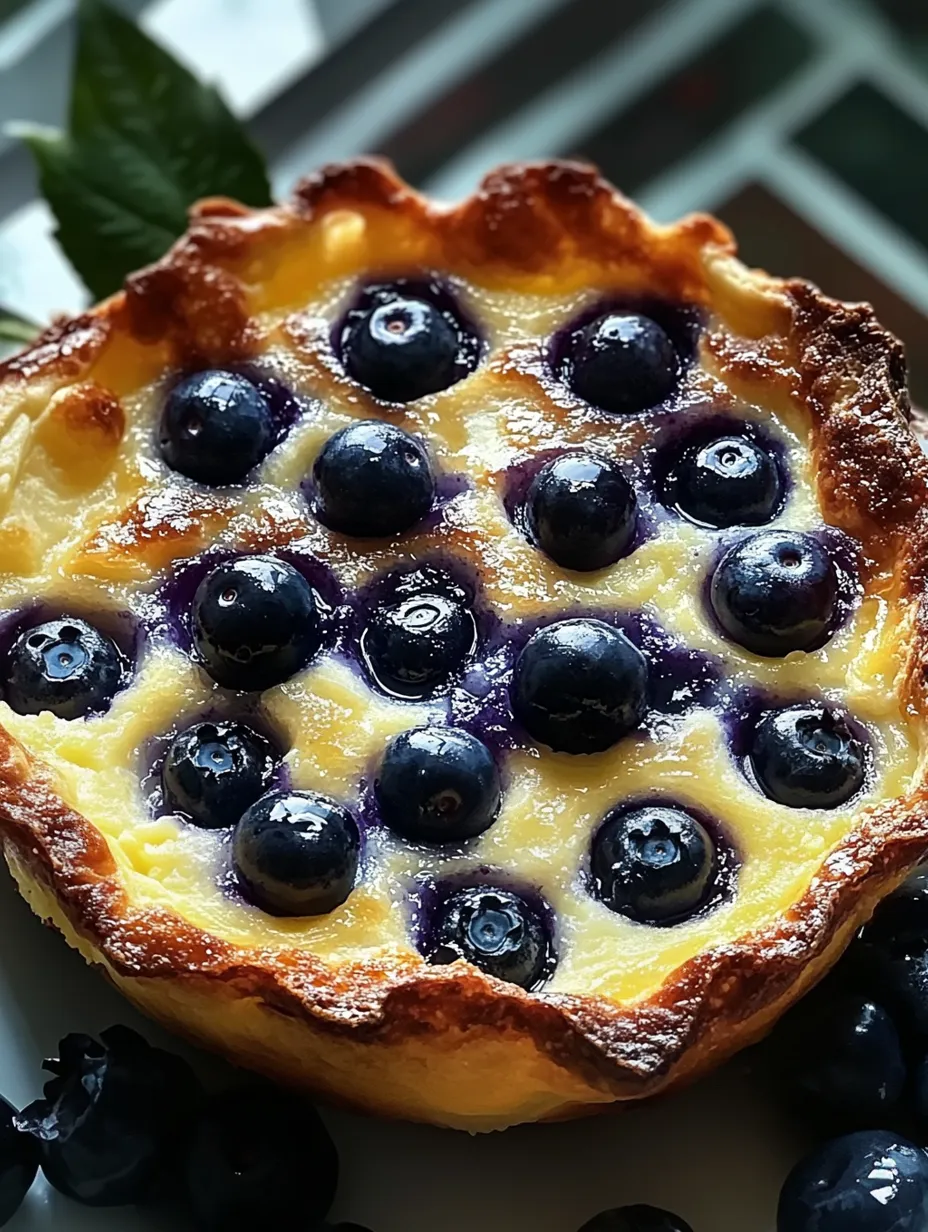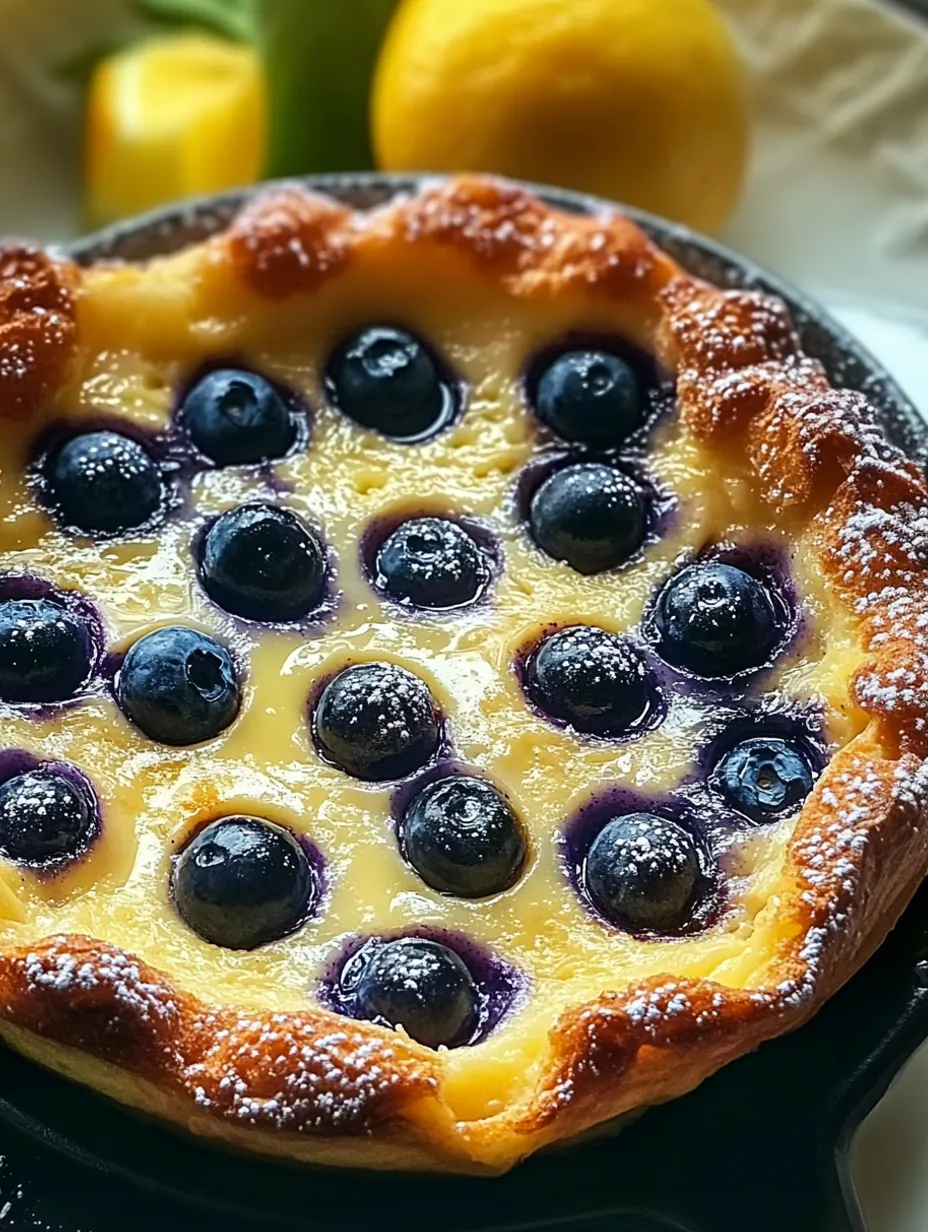 Pin it
Pin it
Blueberry lemon Dutch baby is my go-to when I want to wow breakfast guests without actually working that hard. This giant puffy pancake does all the heavy lifting for you—it rises dramatically in the oven while you sip your coffee, then settles into this gorgeous crater of custardy goodness studded with jammy blueberries. The lemon zest cuts through the sweetness perfectly.
I discovered Dutch babies when my kids were toddlers and I got sick of standing at the stove flipping regular pancakes while everyone else was eating. First time I made one, my husband actually said "wow" out loud when I pulled it from the oven. That almost never happens, so I've kept it in regular rotation ever since.
What You'll Need
- Eggs work their magic here, creating that impressive puff—cold eggs straight from the fridge never rise as well, I've learned the hard way
- Milk gives it that custardy middle—I use whole because that's what we keep around, but 2% works fine too
- All-purpose flour provides structure—nothing fancy needed
- Sugar balances the tart berries and lemon—it's not super sweet, which I prefer for breakfast
- Lemon zest brightens everything up—don't skip this or it'll taste flat
- Fresh blueberries burst into jammy pockets when baked—frozen work in a pinch but they bleed more
- Butter creates the sizzle that gets everything going—salted or unsalted both work
 Pin it
Pin it
How I Make It
Mix the BatterI whisk the eggs really well first—the more air, the better it rises. Then I add milk, sugar, vanilla, and salt. The flour and lemon zest go in last, and I whisk just until the big lumps disappear. Sometimes I cheat and throw everything in the blender for about 10 seconds when I'm feeling lazy.
Get That Pan HotThe cast iron skillet goes into the oven while it preheats to 425°F. This step isn't optional—a hot pan is what makes the magic happen. Once the oven beeps, I toss in the butter and swirl it around as it melts. It should sizzle and start to bubble but not brown.
The Quick PourThis part moves fast. I pour the batter into the hot buttery pan—it usually starts cooking around the edges immediately. Then I quickly scatter blueberries over the top and get it back in the oven as fast as possible. The longer it sits out, the less it puffs.
Hands-Off BakingNow comes the hard part—not peeking for at least 15 minutes. My kids always want to watch it rise through the oven door. It needs about 20-25 minutes total, until the edges crawl up the sides of the pan and turn golden brown. The middle should look set but still have a slight jiggle.
The Grand FinaleWhen it comes out, everyone gathers around to watch it slowly sink in the middle—it's just what Dutch babies do. I dust it with powdered sugar while it's still hot, and sometimes squeeze fresh lemon juice over the top. The contrast between the crispy edges and soft center is what makes it so good.
My mother never understood the appeal until she stayed with us one weekend. She kept saying she preferred "normal pancakes" until I served this. Two bites in, she put down her fork and said, "Well, I guess I've been making pancakes wrong for 70 years." Now she asks for it every time she visits, acting like she's doing me a favor by requesting it.
How to Serve It
I bring the whole skillet to the table for maximum impact. Everyone gets a wedge with the traditional powdered sugar on top. My husband drowns his in maple syrup, the kids like whipped cream, and I'm partial to a dollop of Greek yogurt with honey. If we're feeling fancy, I'll put out little bowls of lemon curd and extra berries.
Shake Things Up
Sometimes I swap in different fruit depending on what's in season—peaches in summer are amazing, and pears with a sprinkle of cinnamon work beautifully in fall. During the holidays, I use orange zest instead of lemon and add a splash of Grand Marnier to the batter if we're having a special brunch.
Saving Leftovers
Let's be honest—there are rarely leftovers. But when there are, I wrap pieces individually and refrigerate them. A quick trip in the toaster oven (never the microwave—talk about rubbery!) revives them pretty well. Not as good as fresh, but still better than most breakfast options.
 Pin it
Pin it
Tricks I've Learned
- If the dough tears while rolling, simply press it back together with your fingertips—it's very forgiving
- A light dusting of flour on your work surface prevents sticking, but too much can toughen the dough
- For cleaner cuts when slicing the dough circle, chill it for 10 minutes after spreading the filling
My Jewish grandmother and Polish grandmother had competing rugelach recipes that became something of a family legend. The Jewish recipe used sour cream instead of cream cheese; the Polish version included a touch of cinnamon in the dough itself. During holiday gatherings, both versions would appear on the dessert table, and family members would diplomatically take one of each. I eventually created this hybrid version that incorporates elements from both family recipes—cream cheese for texture but with that hint of cinnamon in the dough that my Polish grandmother insisted upon. Sometimes the best traditions are the ones that evolve while honoring the past.
Frequently Asked Questions
- → Why did my Dutch baby not puff up as much as expected?
- For maximum puff, make sure your eggs and milk are at room temperature, your oven and pan are fully preheated, and you pour the batter into sizzling butter. Cold ingredients or a pan that's not hot enough can prevent proper rising.
- → Can I make this without a cast iron skillet?
- Yes! Any oven-safe pan will work, including a pie dish or ovenproof skillet. Just make sure to preheat it properly. Metal pans generally produce better puffing than glass or ceramic.
- → Can I use frozen blueberries instead of fresh?
- Yes, frozen blueberries work well. No need to thaw them first – just sprinkle them over the batter straight from the freezer. The pancake might need an extra minute or two of cooking time.
- → Can I prepare the batter ahead of time?
- You can prepare the batter up to 4 hours ahead and refrigerate it. Let it come back to room temperature for about 30 minutes before baking for the best rise.
- → What other fruits can I use in a Dutch baby?
- Strawberries, raspberries, blackberries, peaches, or apples all work well. For apples or other firmer fruits, consider sautéing them briefly in butter and cinnamon before adding to the Dutch baby.
- → Why is it called a Dutch baby?
- Despite the name, Dutch babies aren't actually Dutch! They're derived from German pancakes (Deutsch, not Dutch) and were popularized in the U.S. The name likely comes from a mispronunciation of 'Deutsch' to 'Dutch.'
